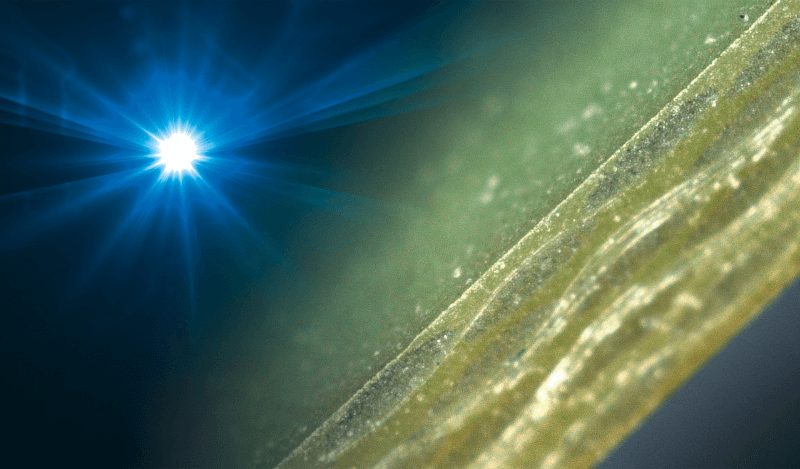This month we caught up again with Andreas Keller, CEO at SmartRep, to talk about laser depaneling within the production process. SmartRep is a technical distributor of manufacturing equipment and process systems for electronics production. Its headquarters are in Hanau, near Frankfurt in Germany.
In this blog post, Andreas talks about the fragility of electronic components and how important it is to separate them non-destructively, safely and efficiently. He describes using LPKF lasers in the SMD manufacturing process and how ESCATEC has integrated LPKFs destined specifically for the medical and sensor tech sectors. SmartRep, LPKF’s partner in Germany, introduced this laser technology to ESCATEC. Finally, Andreas explains the increasing trend towards laser depaneling in manufacturing before we conclude with a brief look at laser vs milling for different tasks.
Why Laser depaneling?
In today's tech-savvy world, electronic devices have shrunk, and so have the circuits integral to their functioning. From headphones to smartwatches, tiny green-printed circuit boards (PCBs) have become a mainstay. These PCBs, vital components in the manufacturing process, are produced in panels to maximise efficiency. But, once these components are integrated and soldered, how do you separate these miniature circuits non-destructively and efficiently?
How do you separate miniature circuits non-destructively and efficiently?
Consider a large board, reminiscent of a DinA4-sized rectangle, dotted with intricately shaped circuits in an orderly matrix. Once these are fully assembled, they need depaneling - separating them out for installation in different devices like smartwatches or headphones. Given the fragility of these components, the separation process demands precision. The solution? A non-contact laser beam!
CleanCut technology
Lasers, specifically the ones championed by LPKF, have made significant inroads into the SMD manufacturing sector. Gone are the days of manual separation or routers which exerted tremendous mechanical strain on the components. Laser depaneling vaporises the PCB material during the process, ensuring a dust-free separation. This technique, known as CleanCut technology by LPKF, guarantees technically clean, carbonation-free edges.

ESCATEC’s Swiss manufacturing hub has integrated LPKF's laser depaneling system, especially for components destined for the medical and sensor tech sectors. Given the industry's emphasis on component quality and durability, the impact of non-mechanical stress during the depaneling process is paramount. It ensures the components remain undamaged and the product's lifespan isn't compromised.
Dr Martin Mündlein, representing ESCATEC Switzerland AG, elaborates on the crucial nature of precision in manufacturing:
Our primary focus when opting for a new depaneling system was the quality of the cut and flexibility in materials.
After thorough consideration and benchmarking, they found LPKF's technical prowess in component separation unrivalled. "The fully automated, virtually force-free process has enhanced our SMD product quality remarkably," Dr Mündlein adds.
The importance of flexible automation in production
SmartRep, LPKF's official partner in Germany, introduced the laser technology to ESCATEC. Andreas Keller, CEO of SmartRep explains the increasing trend towards laser depaneling in manufacturing. He says, "Beyond the evident technological superiority, the push for laser depaneling stems from the need for flexible automation." Especially given the current challenges in skilled labour and component supply chains, manufacturing processes needed to evolve, and laser depaneling has emerged as a solution.
Smaller production runs
Keller also highlights that lasers are particularly beneficial for manufacturing units dealing with product variations in smaller production runs. Lasers offer cost-effective, fast, and adaptable solutions compared to traditional milling processes.
SmartRep's commitment to component manufacturing innovation is evident in its diverse automation solutions, from fully automated systems to robotic arm solutions with integrated function tests.
Delicate components
Reflecting on over two years of experience with the laser depaneling machine, Dr Mündlein lauds its efficiency. "The laser proves invaluable when handling delicate components. For instance, we switched one of our products from milling to laser cutting after facing issues with a specific quartz component. The milling vibrations altered its resonant frequency, a problem the laser resolved impeccably."
Conclusion
Concluding his thoughts on the laser's speed and versatility in manufacturing and production, Dr Mündlein says, “While the laser excels in most applications, we still rely on milling for certain tasks, especially for thicker PCBs. But for most component applications, lasers remain unparalleled.”
Laser depaneling is making significant strides in the SMD sector, with recent patents positioning it as a viable alternative to mechanical milling separation. Yet, many businesses continue to depend on manual methods, now beginning to see the laser's potential. From an automation perspective, separating circuits in multi-piece configurations, especially in high-mix, low-volume production, poses challenges. SmartRep offers expert guidance through a suite of solutions backed by extensive experience.


